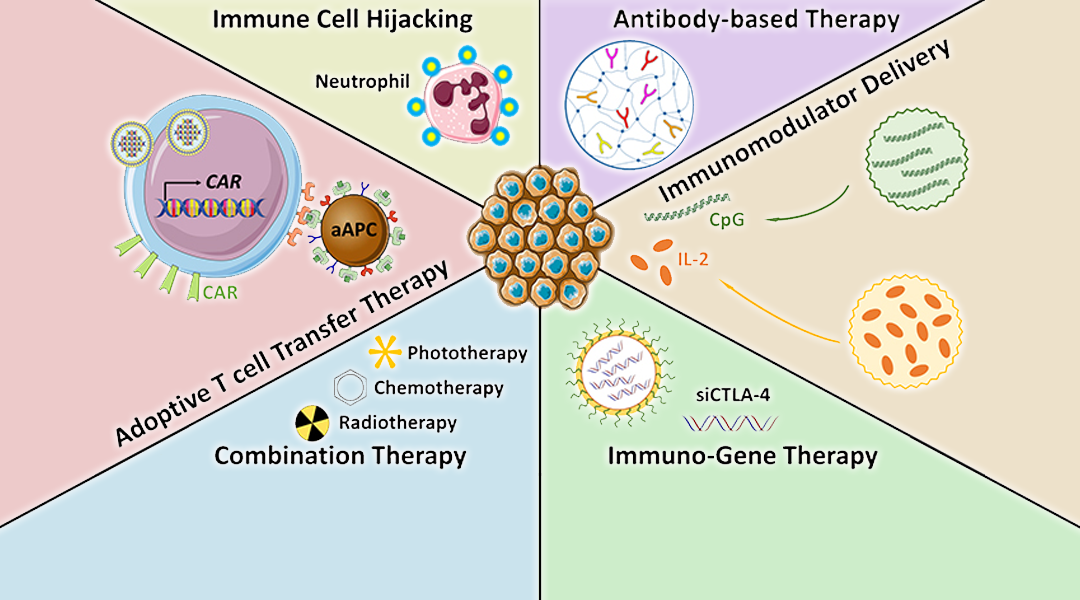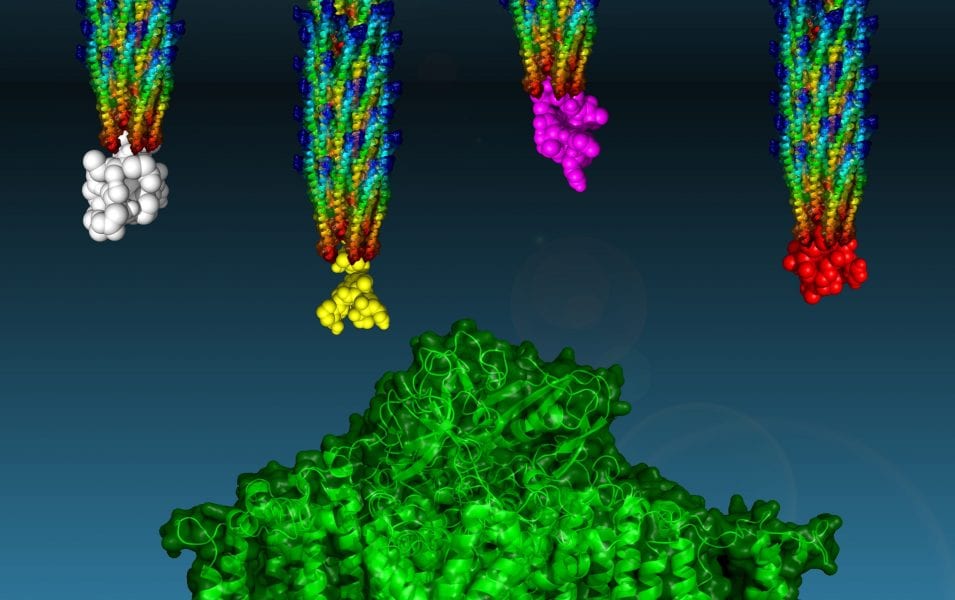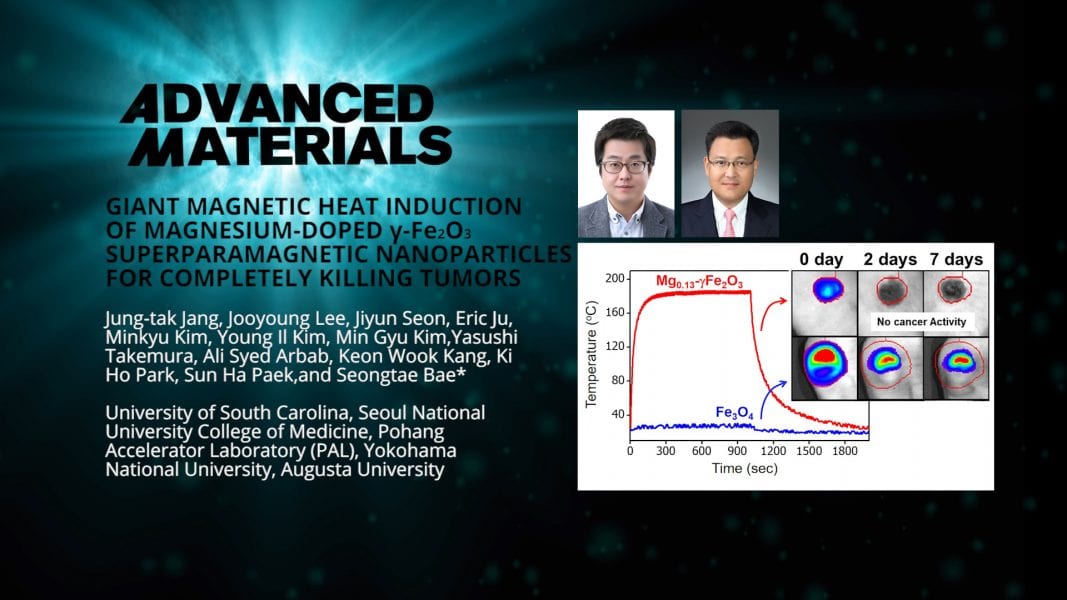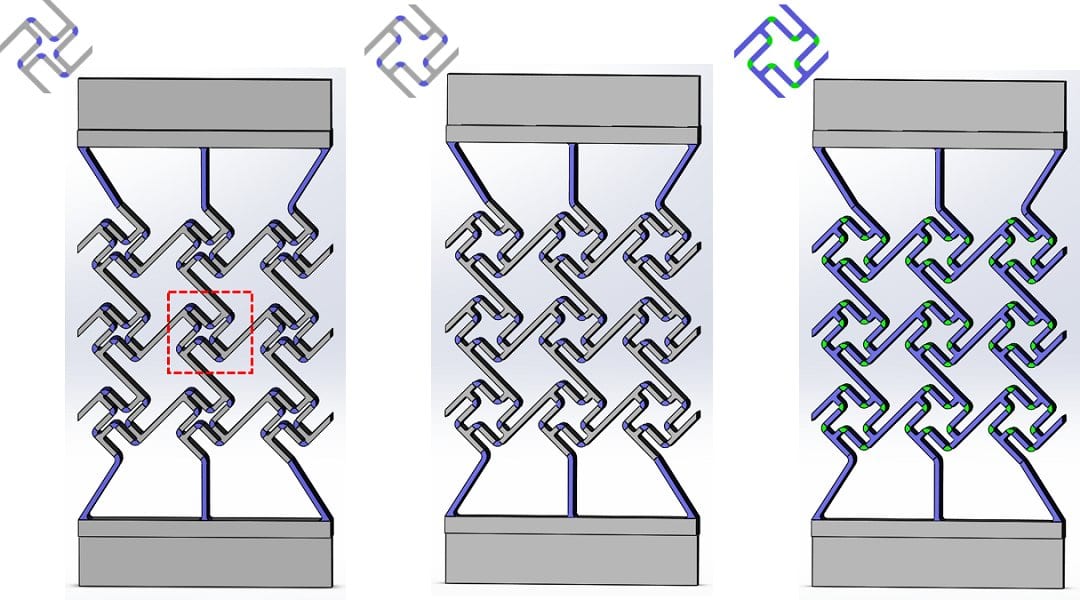Tuo Jin and colleagues from Shanghai Jiao Tong University synthesize a synthetic carrier system for small interfering RNA (siRNA) with customizable size, pH-responsive degradability, and optimized surface population of cell-targeting agent.
![Tumor-Targeting “Polywraplex” for siRNA Delivery [Video]](https://www.advancedsciencenews.com/wp-content/uploads/2018/02/ASN_feature_adfm201703207.jpg)
![Tumor-Targeting “Polywraplex” for siRNA Delivery [Video]](https://www.advancedsciencenews.com/wp-content/uploads/2018/02/ASN_feature_adfm201703207.jpg)
Tuo Jin and colleagues from Shanghai Jiao Tong University synthesize a synthetic carrier system for small interfering RNA (siRNA) with customizable size, pH-responsive degradability, and optimized surface population of cell-targeting agent.

Biomaterials are engineered to improve the safety and efficacy of current cancer immunotherapies.

Science fact catches up with science fiction: by exploiting magnetic levitation, biomanufacturing – creating living 3D structures – is now possible in zero gravity. Utkan Demirci discusses how this works.

Biophotovoltaic devices by incorporation of oriented Photosystem I via phage display.

Researchers design a bio-inspired batoid robot from non-toxic hydrogels operated with Au microelectrodes.

In their review in BioEssays, Klaske Schukken and Floris Foijer discuss the different concepts and consequences of chromosomal instability and aneuploidy.

Researchers develop a new anticancer agent composed of magnesium shallow-doped iron oxide superparamagnetic nanoparticles (SPNPs). The magnetic fluid hyperthermia (MNFH) agent is highly biocompatible and is able to completely eradicate Hep3B-induced tumors.

New designs were fabricated via multimaterial 3D printing and potential applications of sequential particle release mechanisms were systematically explored.

A Macromolecular Rapid Communications special issue, Polymer Materials and Engineering Research at Sichuan University, highlights recent research developments in novel polymer processing technologies; polymer nanocomposites; multicomponent polymer systems and solution thermodynamics; macromolecular synthetic methodology; and functional polymers for energy, sustainability, the environment, and biomedical applications.

For nearly 35 years, CD4 T-cells and their immunephenotyping and enumeration were the focal points of HIV/AIDS research.